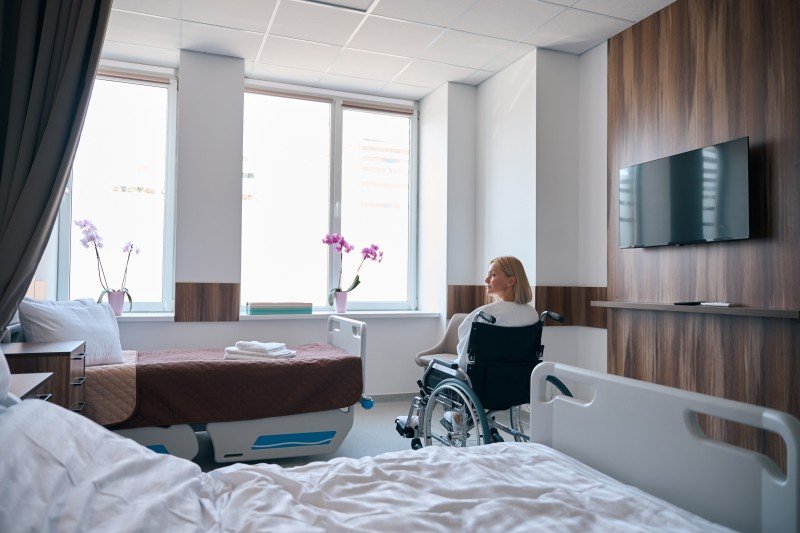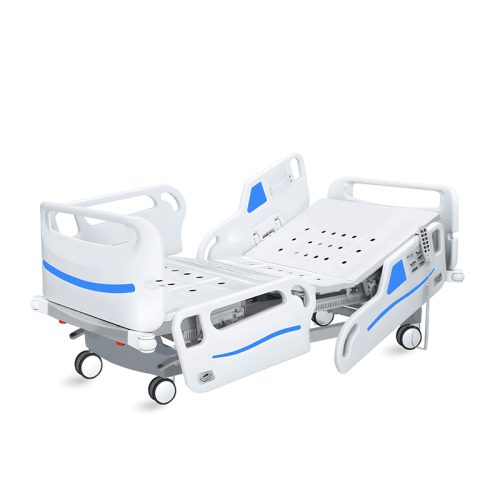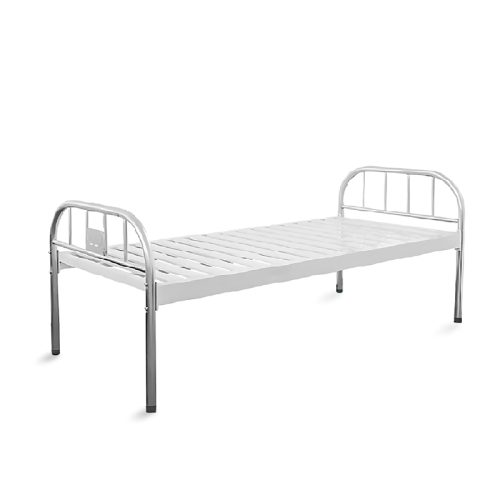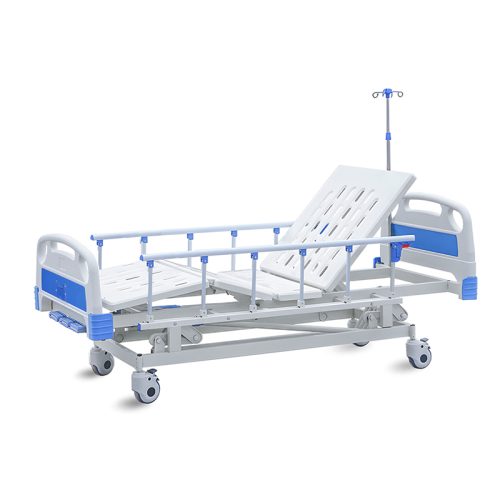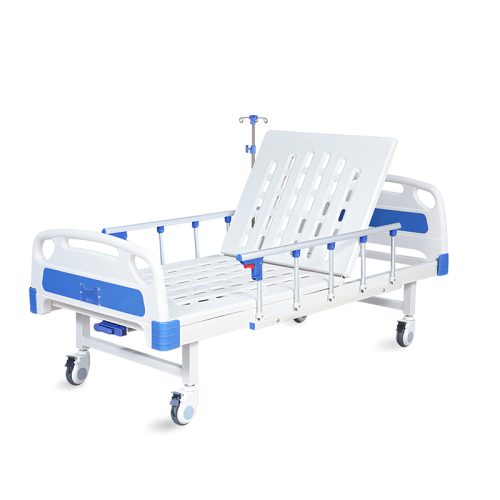
- Slimnīcas gulta
Neatliekamās medicīniskās palīdzības gultu būtiskākās iezīmes kritiskās aprūpes apstākļos
- Līdz kelingmedical
In this article, we are going to dive into what emergency room beds are, what they can help with, how they improve patient care, facilitate the workflow for doctors, and help in treating patients more effectively. We’ll also cover which types of emergency room beds are out there and what to look for when buying one.
What Is An Emergency Room Bed?
An emergency room bed is a bed made especially for the hospital or emergency room to be used to treat patients with various conditions, from injuries caused by accidents to acute diseases. Such beds are made to be very swivelable, multifunctional, and long lasting to fit patients in different positions and make easy medical treatment.
EMERGENCY ROOM BED: Usually, emergency room beds are equipped with features that allow physicians to quickly transfer patients to treatment or intervention. They’re designed to handle high traffic and the physical pressures of an ED.
Descriptions of ER Beds Essential Details of Emergency Room Beds.
Variable For Patient Comfort and Support.
A ER bed is built with wide open positions, enabling doctors to get patients where they need to be so they can treat them. The head, foot, and height of the bed can all be changed in a crisis.
Head and Feet Elevation: The head and feet can be raised for various diseases, from respiratory difficulties to circulatory issues. Patients can be laid out for maximum ease and in order to carry out treatments such as intubation or ventilation.
Height Adjustment: When the bed can be set at the desired height, physicians can raise or lower the bed to that level that’s best for the patient and to minimize physical burden on the caregiver.
Trendelenburg and Reverse Trendelenburg Positions: They are critical modifications for the shock patient or those with cardiovascular disease, in order to increase blood flow and provide treatment options.
Sturdy and Durable Construction
Emergency room beds must be durable because several patients spend hours in them each day. You also need to look for longevity, and the material should be of good quality so the bed will last long.
Material of Frame: ER beds can have heavy steel or aluminum frames to support the pressures of emergency care without sacrificing stability.
Wheels or Casters:The casters or wheels on the bed have to be tough enough to hold the weight of the patient while also being movable within the busy, hectic ER. Locking casters are needed to hold the bed in place during an operation.
Patient Safety Features
Emergency care should be safe and ER beds have many safety precautions to avoid accidents or injuries on the patient’s part.
Side Rails: Adjustable side rails are among the most valuable safety elements on an ER bed. These rails prevent patients from falling out of bed during treatment, particularly if unconscious, put under sedation or very awake. The rails can be raised or lowered as per need.
Brakes and Locks: Emergency room beds usually have strong locking systems to prevent accidental movement of the bed during treatment or transfers. This feature is extremely important for patient safety.
Clearance for CPR: Most ER beds are constructed with sufficient clearance to the chest and abdomen so that CPR or other life-saving procedures can be done free of obstruction.
Ease of Cleaning and Maintenance
It’s essential, because this work that is done in emergency rooms is so important, to be clean and hygiene conscious. EMERGENCY ROOM BED CUTTER: The emergency room bed should be easy to wash and disinfect so as not to spread disease.
Smooth Finish: A bed with a smooth surface that is porous and doesn’t scratch easily can be cleaned and disinfected. For hygiene reasons and durability during the high pace work, vinyl or coated steel are often opted for.
Parts that Can Be Taken Out: You can get rid of the head and foot units or mattress platforms from beds as these pieces can be cleaned one at a time or replaced.
Versatility for Various Patient Needs
In an ER, patients come with all sorts of things to do with their bodies, and they all need different kinds of treatments. Beds in the emergency room are adaptable to many different interventions and patient populations.
Flexible Features to Meet Individual Needs: There are various types of options for ER beds that allow you to fit patients of any age, who have suffered from injuries or who have been in a chronic disease.
Integration with Other Medical Devices: Most ER beds are compatible with other medical devices like a monitoring device, IV pole or oxygen concentrator. Be sure to make sure they can reach these tools easily on the bed to treat and check in.
Quick and Easy Mobility
The beds in the emergency room also have to be accessible as they are sometimes moving around quickly or need to be moved from one place to another within the ER. That means beds that are lightweight in a high-speed, sometimes tight environment.
Mobile Casters or Wheels: ER beds have mobile casters, which swivel or lock to easily move patients or beds around.
Lightweight Construction: Lightweight beds are sometimes needed to make moving around in the department easier.
Compatibility with Monitoring Equipment
Hospital beds should be made in such a way that medical equipment like a heart-rate monitor, oxygen tank, or IV stand can easily be clipped on. These devices must be available to the patient and the doctors for all-day surveillance and care.
Comfortable Mattresses for Critical Care
While convenience and adaptability are the top priorities for an ER bed, comfort is not. The mattress of the bed needs to be able to cushion a patient’s body well enough to feel comfortable in the treatment room, especially the very sick or injured.
Pressure Relief: Search for beds with mattresses with pressure relief to keep your bed free of sores, especially if you will have a patient in bed for a long time.
How to Choose the Right ER Bed.
Purchasing an emergency room bed for a hospital or clinic also involves keeping the hospital and patient’s needs in mind. A few things to consider while shopping for something:
Size and Dimensions: Be sure the bed can be accessed in the space in the ER. Not so heavy and large that the bed becomes uncomfortable, but big enough for patients of all sizes.
Price Point: Emergency room beds are an investment, budget wise and add in long-term care.
Features vs. Needs: Highlight what is important for your ER. For a big hospital, an all-moving bed with all the safety precautions available could be needed, or just a simple version could do for a small clinic.
Secinājums
Beds in the ER are an important part of patient care in a high-pressure, fast-paced environment. These beds have to be portable, stable and contain safety elements so patients and medical staff can provide and receive the best care. It is important that the bed is able to be manipulated, moved and comfortable, among other qualities, in an ER environment. You can consider all these things and work within your healthcare organization’s specific needs to make sure your emergency room beds are well-prepared to serve critically ill patients.
📧 E-pasts: inquiry@shkeling.com
🌐 Tīmekļa vietne: www.shkeling.com.cn
Mēs ceram uz veiksmīgu sadarbību ar jums!

